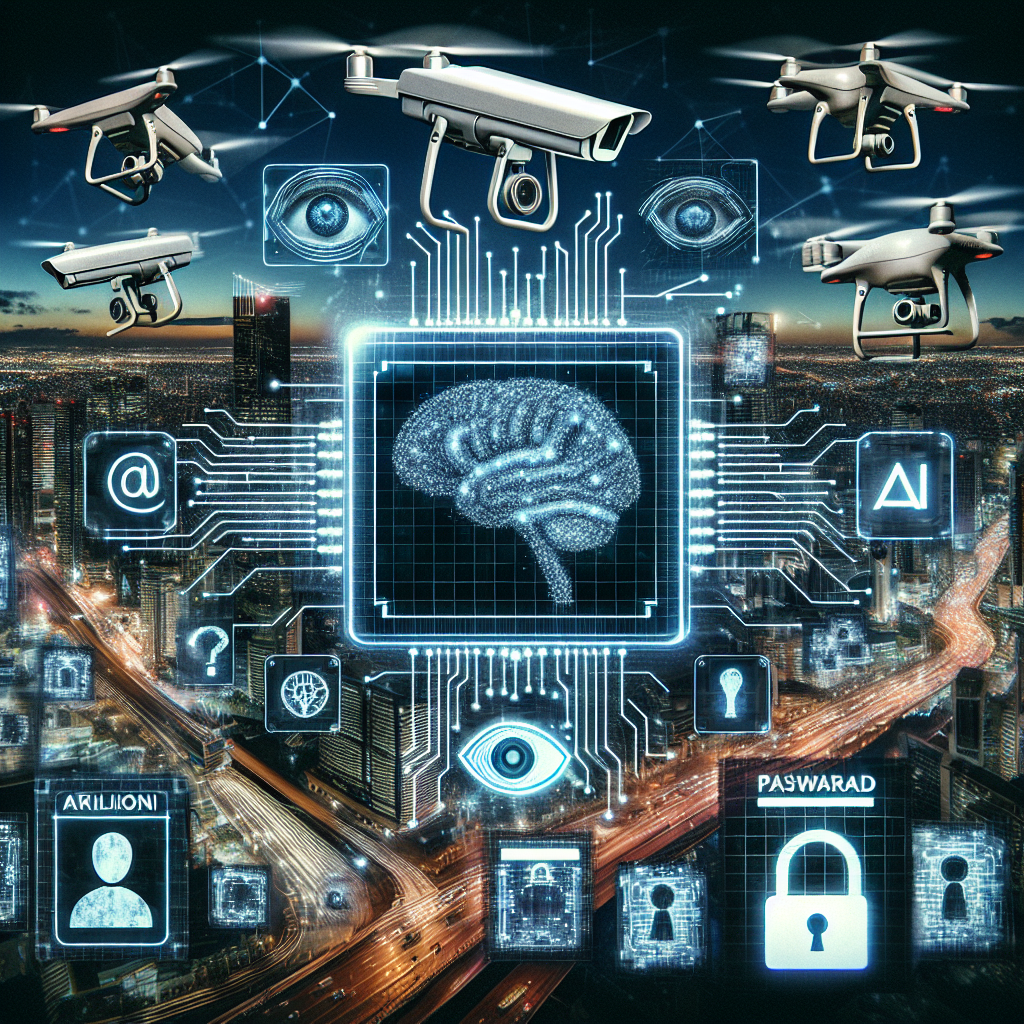Artificial Intelligence (AI) and surveillance technologies have become increasingly prevalent in our society, with both positive and negative implications. On one hand, AI has the potential to revolutionize various industries, improve efficiency, and enhance security measures. On the other hand, the widespread use of AI in surveillance poses significant risks to privacy and civil liberties. In this article, we will explore how AI and surveillance intersect, the potential risks they pose to privacy, and what individuals can do to protect their personal data.
AI and Surveillance: A Complex Relationship
AI-powered surveillance systems have become a common feature in public spaces, businesses, and even in our own homes. These systems utilize sophisticated algorithms and machine learning techniques to analyze vast amounts of data, including video footage, audio recordings, and biometric information. This allows for real-time monitoring, tracking, and identification of individuals, as well as predictive analytics to anticipate future behavior.
While AI-powered surveillance has the potential to enhance public safety and security, it also raises serious concerns about privacy and civil liberties. The widespread deployment of surveillance cameras and facial recognition technology, for example, can lead to mass surveillance and the indiscriminate collection of personal data without individuals’ consent. This can result in the erosion of privacy rights, increased government surveillance, and the potential for abuse of power.
Risks to Privacy
There are several ways in which AI-powered surveillance poses risks to privacy:
1. Mass Surveillance: The widespread deployment of surveillance cameras and other monitoring technologies can lead to mass surveillance, where individuals are constantly monitored and tracked in public spaces. This can create a chilling effect on freedom of expression and association, as individuals may feel inhibited from exercising their rights if they believe they are being watched.
2. Facial Recognition: Facial recognition technology allows for the identification and tracking of individuals based on their facial features. While this technology can be used for security purposes, it also raises concerns about the potential for abuse, misidentification, and the creation of comprehensive databases of individuals’ biometric information without their consent.
3. Predictive Analytics: AI-powered surveillance systems can use predictive analytics to anticipate individuals’ behavior and actions based on their past activities and data patterns. This can lead to profiling and discrimination, as individuals may be targeted or treated differently based on algorithmic predictions rather than actual behavior.
4. Data Breaches: The vast amounts of personal data collected by AI-powered surveillance systems are vulnerable to data breaches and unauthorized access. This can result in the exposure of sensitive information, identity theft, and other privacy violations.
FAQs
1. How is AI used in surveillance?
AI is used in surveillance for a variety of purposes, including facial recognition, object detection, behavior analysis, and predictive analytics. AI-powered surveillance systems can analyze vast amounts of data, including video footage, audio recordings, and biometric information, to monitor, track, and identify individuals in real-time.
2. What are the risks of AI-powered surveillance to privacy?
The risks of AI-powered surveillance to privacy include mass surveillance, facial recognition, predictive analytics, and data breaches. These technologies can lead to the erosion of privacy rights, increased government surveillance, profiling and discrimination, and the exposure of sensitive personal data.
3. How can individuals protect their privacy in the age of AI-powered surveillance?
Individuals can protect their privacy in the age of AI-powered surveillance by being mindful of their online activities, using strong passwords and encryption, limiting the sharing of personal information, and advocating for privacy rights and regulations. Additionally, individuals can use privacy-enhancing technologies, such as virtual private networks (VPNs) and encrypted messaging apps, to secure their online communications and data.
In conclusion, AI and surveillance technologies have the potential to revolutionize various industries and enhance security measures. However, the widespread use of AI in surveillance poses significant risks to privacy and civil liberties. It is important for individuals, policymakers, and technology companies to address these risks and take proactive measures to protect personal data and privacy rights in the digital age.

